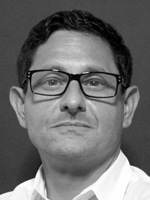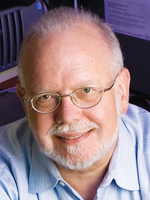Valerie Neff Newitt
December 2019—Don’t even try to put Boca Biolistics into a box. The Pompano Beach, Fla., company is the rare outside-the-box model of three levels of service under one roof: an expansive biorepository, a contract research organization, and a reference laboratory that earned CAP accreditation in March.

Mauro
Joseph Mauro, president and CEO of Boca Biolistics, has been developing the “new” model for two decades. “The thing that makes us different is that we’re a vertically integrated company encompassing a biobank, CRO, and reference lab. There aren’t many players in this space. LabCorp and Quest have been buying CRO companies, so they are moving into that area, but they are not biobanks. They do not have all of the platforms we have.”
Mauro lists the benefits to what he describes as “one-stop shopping”: a shortened turnaround time between collecting and testing samples and generating and providing data, cost consolidation and package discounting, and less stress on the clients’ own staff.
One of its clients is Hologic, where Sree Panuganti, PhD, is a scientist who develops diagnostic assays. “At Hologic, we have considered all three levels of service that Boca provides for various projects, and we’ve selected one or two based on our project-specific requirements,” Dr. Panuganti says. “It’s hard to pick one service that we find most useful. Some projects use the biobanking services more than other services. For our current project we find the reference testing is the most important service.” For that, she says, she’s impressed with the turnaround time and high-quality results.

Dr. Kiechle
Frederick L. Kiechle, MD, PhD, is chief medical director of Boca Biolistics Reference Laboratory. Having spent 33 years directing clinical laboratory divisions at the University of Pennsylvania, William Beaumont Hospital in Michigan, and, most recently, Memorial Healthcare System in South Florida, Dr. Kiechle says, “I’ve experienced it all—academia, staff pathologist at a health care facility, and private practice—and I understand the value this model brings to pathologists, labs, hospitals, diagnostic companies, and others.”
Often tasked with serving as principal investigator, Dr. Kiechle guides projects bound for the Food and Drug Administration through Boca Biolistics’ CRO division. “I oversee specimens when they arrive, what we do with them, and their final disposition; comparative testing; data collection and handling. I’ve had plenty of experience with CRO and FDA projects, and it’s a big job to make sure it all runs smoothly and stays on deadline,” he says.
When CRO work is done in a busy clinical lab setting, he says, it can paralyze normal operations. “A great deal of extra time is required of the PIs, usually a PhD or an MD running that section of the lab, as well as the technologists and technicians who must run the tests. Consider that some of these projects require testing 10,000 specimens in a short period. It can shut down normal service activity.” Once this work is done within a busy hospital lab, the staff will never want to do it again, Dr. Kiechle says, adding that all of it can be handed over to a CRO.
Sharon Stosur, MS, MLS(ASCP)cm, founder and president of the nonprofit Preeclampsia Paradoxology for Professionals and a former specimen acquisition specialist for a large IVD manufacturer, says Boca’s multiple levels of service are a plus for sample integrity. “Specimens can be procured, tested, aliquoted, and stored, which offers greater assurance that the specimens have not been subjected to excessive shipping and handling, with the added risk of diminished sample integrity.”
The client journey typically begins with Biobanx, the company’s biorepository. “When a diagnostics company or a lab is developing a new assay or revamping an existing assay,” Mauro says, “they first need to do research and development, which requires specimens from archives in a biobank. We can provide them with the specimens they need.”Once clients know their assay or platform works, they prepare to take it to clinical trials. “We can help them with specimens there, too. We ask clients what they are looking for. They may say, for example, they need to prospectively collect a thousand HIV patients and the associated clinical data to test on their platform. In this case, they do not want biobank specimens but instead prospectively collected patients like in any normal setting.”
The CRO department handles the regulatory components of prospectively collecting samples, getting them consented, and gathering the paperwork required for FDA submission.
The CRO differs from others in that it is full service, Dr. Kiechle says. “Sometimes that includes helping to design and write proposals. Or, if you hand us a proposal, we’ll show you a budget and how we can help you get it done most efficiently.”
The specimen collection process is extensive. “We are distinguished by our very large global reach in specimen acquisition,” Mauro explains. “For example, if you are conducting an HIV study, you need HIV samples from around the world to make sure you have a valid assay that is picking up all the different strains and subtypes in HIV-1 and HIV-2. The only true way to do that is to get samples from Africa, Latin America, Asia, the United States, et cetera. We currently gather samples from more than 50 countries around the world.”
Such widespread geographic sample gathering is difficult for many laboratories, he says. “It’s complex and takes time and effort. They have to get those countries set up to be able to provide them with samples. They have to get export approval, and they must deal with the foreign ministries of health to get permission from each country. Then a CDC import permit also must be maintained.”
Gulrez Singh, MS, formerly of Roche Molecular Systems as director of biospecimen management, began using Boca in its early days. “They were one of our key suppliers, sourcing a variety of well-characterized biological materials of human origin, from geographically diverse populations, with reasonably short turnaround times,” she says. “In those days biobanking was a novelty, and their service was unique. Though more vendors have since entered the global material acquisition scene, these guys went into tough environments, such as West Africa when there was civil unrest, for example, and they always successfully worked around it.” New companies are still on the learning curve, Singh says. “These guys have perfected their work. Experience matters.”
Boca’s collection gathering prowess was fully demonstrated during the height of the Zika outbreak in 2016. The company found itself in the enviable position of having already collected a mountain of samples from the Dominican Republic. “When Zika started to explode, we started doing longitudinal draws from patients,” Mauro says. “We collected serum and plasma and urine. We had monstrously deep involvement in Zika as it got more and more active.”
 CAP TODAY Pathology/Laboratory Medicine/Laboratory Management
CAP TODAY Pathology/Laboratory Medicine/Laboratory Management
